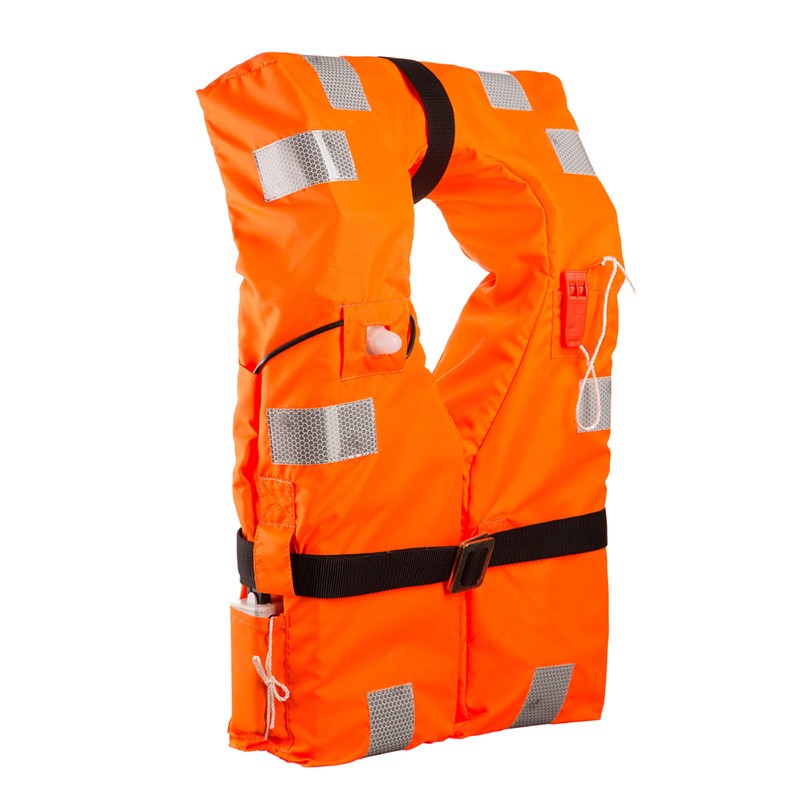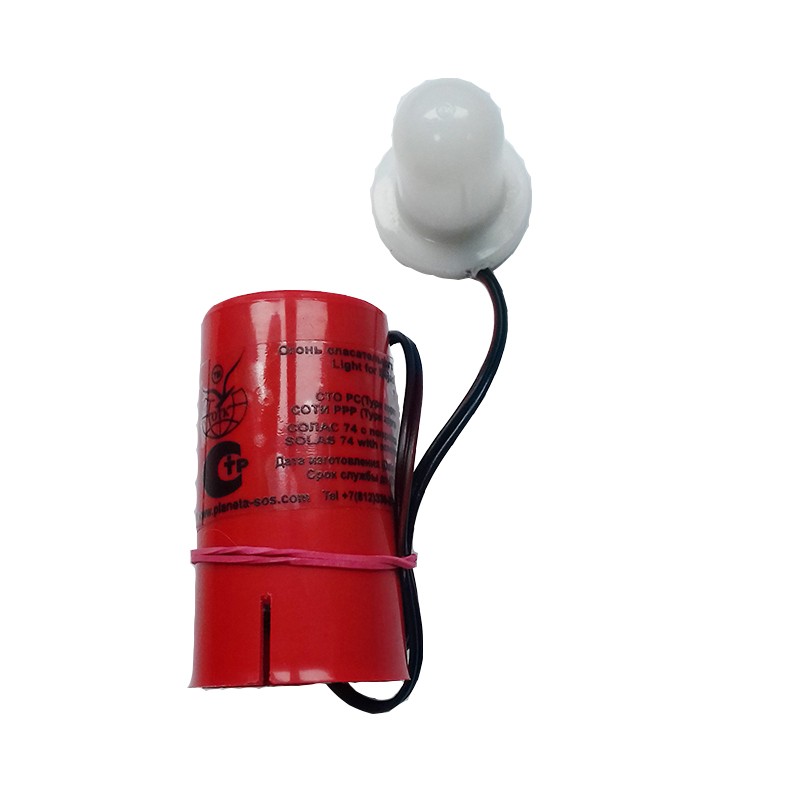SOLAS requirements for life jackets
SOLAS requirements for life jackets
A lifejacket, in accordance with the requirements, must be provided to every person on board the vessel and,
in addition:
- for passenger ships making flights of less than 24 hours, the number of children's lifejackets must be provided equal to the number of at least 2.5% of the number of passengers on board;
- For passenger ships on flights of 24 hours or more for each child on board, lifejackets should be provided for children;
- Lifejackets suitable for children should be provided in an amount equal to 10% of the number of passengers on board or as much as necessary to provide a life jacket for each child on the ship;
- A sufficient number of lifejackets for duty persons should be provided. Lifejackets intended for duty persons should be laid on the bridgebrt, in the engine room and at any other watchdog station;
- If adult lifejackets provided are not suitable for people weighing up to 140 kg and chest circumference up to 1750 mm on board, there should be enough appropriate devices on board to ensure their safety.
- Rescue jackets should be placed in easily accessible places and their position should be clearly indicated. In cases where, due to special conditions of the vessel, lifejackets provided in accordance with the requirements of paragraph 2.1 may become unavailable, the Administration must take alternative measures that may include an increase in the number of lifejackets on the vessel.
- Lifejackets used in fully enclosed lifeboats, except for free-fall rescue boats, should not prevent entry into the lifeboat or seats, including the use of seat belts in the lifeboat.
- Lifejackets selected for lifeboat lifeboats should not prevent entry to the lifeboat, the safety of passengers or the operation of a lifeboat.

Additional Information:
A life jacket for adults should be designed in such a way that:
- Do not support the combustion process or continue melting after full enveloping with fire for 2 seconds.
- It could be properly put on for one minute without help, guidance or preliminary demonstration;
- It could be worn only in one way or exclude the possibility of incorrect putting on;
- Allow the owner to jump from a height of at least 4.5 m into the water without injury and damage to the lifejacket.
- To maintain buoyancy which would not decrease by more than 5% after a 24-hour immersion in fresh water.
- Must have a whistle, firmly secured with a cord.
An adult life jacket should have sufficient buoyancy and stability in calm fresh water:
- Raise the head of an exhausted or unconscious person by at least 120 mm from the water with the body tilted back at an angle of at least 20 ° from the vertical position;
- Turn the body of an unconscious person in water from any position to a place where the mouth is cleaned of water in no more than 5 seconds.
- Should allow a person wearing it to swim for a short distance and board a rescue boat.
A children's lifejacket should be made of the same materials and perform the same functions as an adult life jacket, with the exception of the following:
- Provision of assistance with dressing for young children is permitted;
- It is only necessary to raise the mouth of the emaciated or unconscious user, cleared of water, to a distance corresponding to the size of the intended user;
- Assistance can be provided on board the ship, but the owner's mobility should not be significantly reduced.
In addition to the markings with approval information, including the administration that approved it, and any operational restrictions, the child's lifejacket should be marked:
- The height or weight range for which the life jacket will meet the test and evaluation criteria recommended by the organization in A. 689. (17)
- The symbol "child", as shown in the symbol "child's life jacket", adopted by the organization in A. 760 (18)
Inflatable Lifejackets
An inflatable lifejacket, for buoyancy, must have at least two separate compartments and meet all requirements for conventional lifejackets, and must also:
- Inflate automatically when immersed, equipped with a device that allows you to pump up with one hand movement and be able to pump up your mouth;
- In the event of loss of buoyancy in any one compartment, be able to fulfill all the requirements for simple vests;
- Should have a buoyancy that does not decrease by more than 5% after 24 hours of immersion in fresh water after inflating by an automatic mechanism.
Lights search life jacket
![SOLAS requirements for life jackets]() Must have a light intensity of at least 0.75 cd in all directions of the upper hemisphere;
Must have a light intensity of at least 0.75 cd in all directions of the upper hemisphere;- Must have an energy source capable of providing a light intensity of 0.75 cd for at least 8 hours;
- Be noticeable on the same large segment of the upper hemisphere as is practically possible when attached to a lifejacket;
- Be white.
- Provided by a manually operated switch;
- Flash with a speed of at least 50 flashes and no more than 70 flashes per minute with an effective luminous intensity of not less than 0.75 cd
 +7 (812) 4-673-673
+7 (812) 4-673-673
 Must have a light intensity of at least 0.75 cd in all directions of the upper hemisphere;
Must have a light intensity of at least 0.75 cd in all directions of the upper hemisphere;